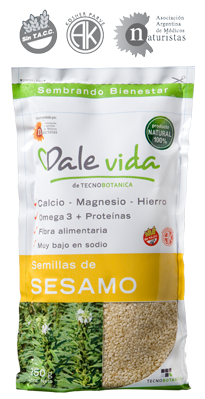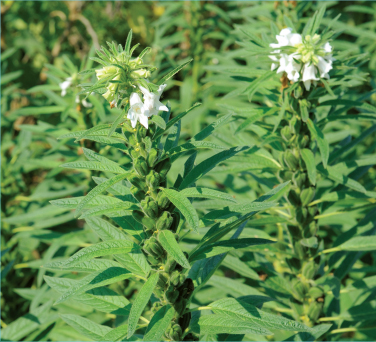Sesame
 Historical Overview
Historical Overview
Sesame is originally from India (where its scientific name “indicum” derives) and Africa, from where it was brought to America by the slaves, who used its seeds to thicken and flavor a great variety of dishes. It is considered the oldest oil plant used by man.
Sesame is one of the seeds considered sacred by many peoples in ancient times. Chinese have used sesame for more than 5,000 years, and it was cultivated and venerated in Mesopotamia, India and Egypt, where we can find it represented even in the frescos in the tombs of the pharaohs. In Greece, its seeds have always been very much appreciated as an exquisite and highly energetic food and condiment. Women in ancient Babylon ate a mixture of honey and sesame to prolong their youth and beauty, and Roman soldiers did the same to obtain strength and energy.
Sesame has a high content of natural antioxidants of great value. It is an excellent source of lecithin and calcium, and has a perfect balance of Omega-3 and Omega-6 fatty acids. It has a high quantity of proteins, apart from being rich in methionine, an essential amino acid.
It has unsaturated fats which, together with its lecithin content, makes sesame seeds a food that contributes to reducing the blood cholesterol levels.
They are remarkable due to their very high levels of:
- Calcium, that participates in the bones and teeth formation.
- Iron, that plays numerous and important functions in the body.
- Zinc, a mineral that participates in the metabolism of carbohydrates, fats and proteins
Contains lignans, including sesamine, a phytoestrogen with antioxidant and anti-carcinogenic properties. Sesame seeds also include phytosterol, associated with reduce levels of blood cholesterol.
They also have great quantities of fiber, so their consumption is beneficial to regulate bowel function.
Celiac individuals can consume it because it does not contain gluten. At present, no toxic components have been detected.

